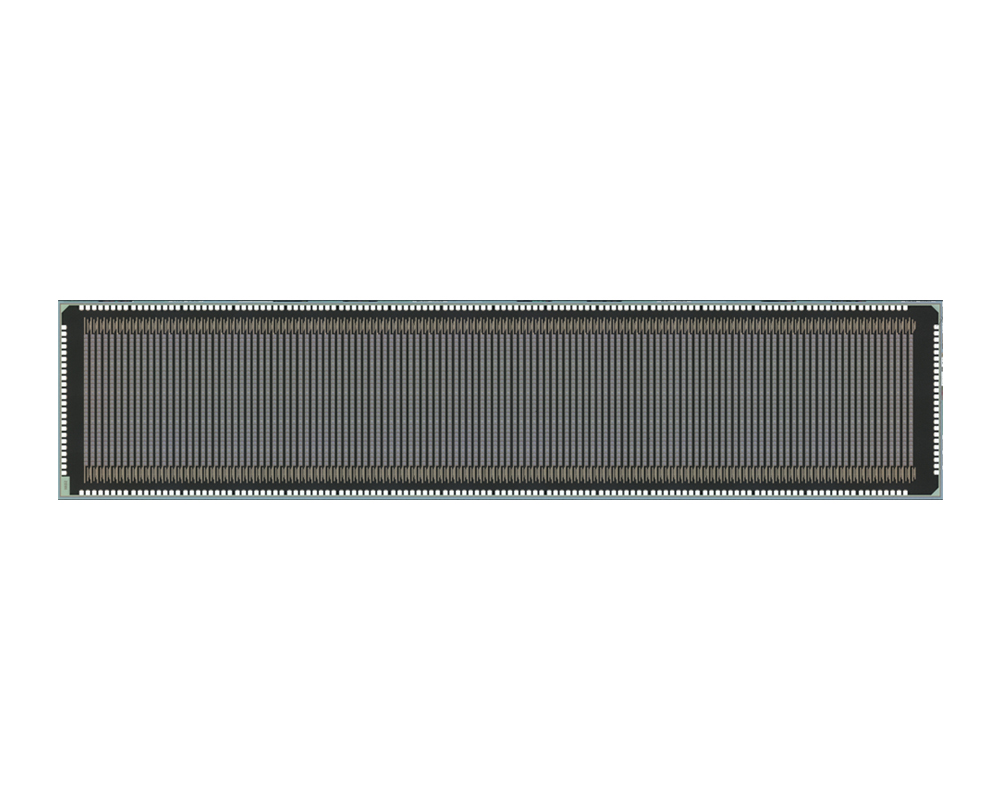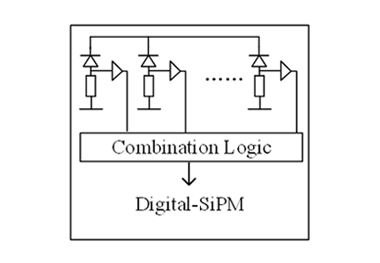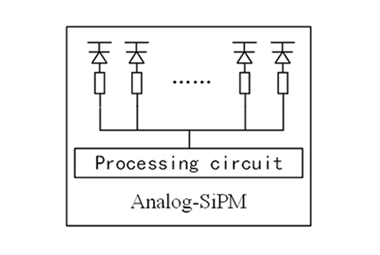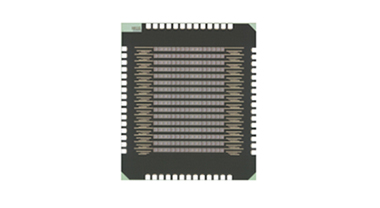SiPM

SiPM
Silicon Photomultiplier (SiPM) is an array of hundreds and thousands of Single Photon Avalanche Diodes (SPAD), and it features high sensitivity, high gain, compact structure, and insensitivity to magnetic fields. SiPM is less sensitive than Photomultiplier Tube (PMT) to the magnetic field and is also more sensitive than Avalanche Photodiode (APD), which can be applied to ultra-weak light environments and severe electromagnetic field environments. Compared with a SPAD-based LiDAR, the SiPM-based LiDAR can not only achieve a longer detection range, but also determine the light intensity information. Meanwhile, the gray information of image cannot be always acquired in the SPAD-based LiDAR.
As shown in Figure 1, SiPM can be classified into two categories, digital SiPMs and analog SiPMs, according to their different output signals. For the digital SiPM, its output is a series of digital pulses, and the detected photons can be counted by recording the number of pulses. Whereas, the output of the analog SiPM is an analog voltage pulse, whose amplitude is proportional to the number of photons received. Both types of SiPM have high sensitive responses to the ultra-weak light environment and have good time resolution. In general, the maximum count rate of digital SiPM is limited by the propagation delay and dead time of the peripheral circuit, whereas the analog SiPM can achieve a larger dynamic range for photons counting.

Fig1 (a) Digital SiPM
Fig1 (b) Analog SiPM
As a domestic R&D enterprise that masters the core technologies of photodetectors and analog front-end circuits, “Xilight Technology” has launched two SiPM products. As shown in Figures 2 and 3, XHSA16 is a single-channel SiPM chip, which can be widely used in camera laser focusing, proximity sensing, drone altitude calibration and auxiliary landing, robot obstacle avoidance, human/vehicle flow statistics, and parking space detection. XHSA32 is a multi-channel analog SiPM chip, which consists of 16 independent analog output channels, and has wide application prospects in the fields of intelligent robots, automobile assisted driving, and medical fluorescence lifetime imaging. With the multi-channel transimpedance amplifier (TIA), comparator, high-precision time-to-digital converter (TDC), high-speed analog-to-digital converter (ADC), and other products of “Xilight Technology”, the SiPM chips can realize the distance measurement and imaging with wide range, high precision, and fast response speed.

Fig2 Photography of single-point SiPM chip
Fig3 Photography of 16 channel SiPM chip
The SiPM chips of “Xilight Technology” are fabricated in standard CMOS process, and they are cost-effective, easy to be integrated monolithically with analog front-end circuits, and available for the custom design. “Xilight Technology” will launch a series of SiPM products with higher fill factor, better performance in gain and sensitivity, more channels, and suppression of ambient light noise, and provide the global competitive low-power, low-cost, and high-performance LiDAR chip solutions.
Chip characteristics:
 Standard CMOS process
Standard CMOS process
 High sensitivity
High sensitivity
 High Gain
High Gain
 Insensitivity to magnetic field
Insensitivity to magnetic field
 Low bias voltage
Low bias voltage
Application fields:
 3-D detection based on direct Time of Flight (dToF)
3-D detection based on direct Time of Flight (dToF)
 High energy physics
High energy physics
 Biological diagnosis and medical imaging
Biological diagnosis and medical imaging


 0574-87300854
0574-87300854 info@xilight.tech (General Administration)
info@xilight.tech (General Administration)

